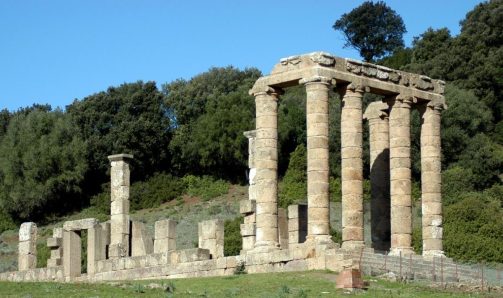Fluminimaggiore is a small village that stands on the banks of the rio Mannu, at the foot of a wide valley, surrounded by high mountains and facing the sea.
The presence of the water-rich river has strongly marked the place. Within the town, there were once numerous, at least 20, watermills. Today one of these structures, the Licheri Mill, bears witness to the fervent activity and houses the Ethnographic Museum.
A short distance from the town, among forests and streams, hide archaeological and naturalistic treasures of extraordinary beauty and importance: the Temple of Antas, the Caves of Su Mannau, the perennial spring of Pubusinu, and fossils.
The valley of Antas, inhabited continuously since Nuragic times, is home to the largest ancient sacral building in Sardinia, which, because of its majesty and good state of preservation, is one of the most important and fascinating archaeological sites on the island. A little further on, going even further into the mountains, is the Su Mannau Cave, which, very rich in water and splendid calcite and aragonite concretions, stretches for about 8 k and is a destination for many visitors.
Numerous and very rich in water are the perennial springs found in the mountains, including that of Pubusinu, the largest spring on the island. Fluminimaggiore is a veritable textbook of geology and paleontology! Its territory is among the oldest in Europe and, like a real textbook, it tells the story of the Earth and does so through the most complete Paleozoic collection in Italy, with fossils dating from 590 million to 290 million years ago.



